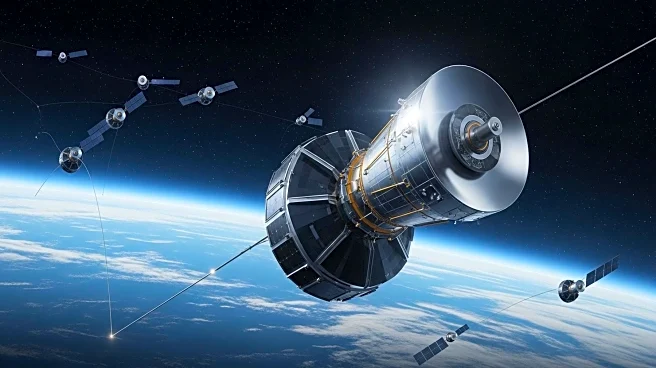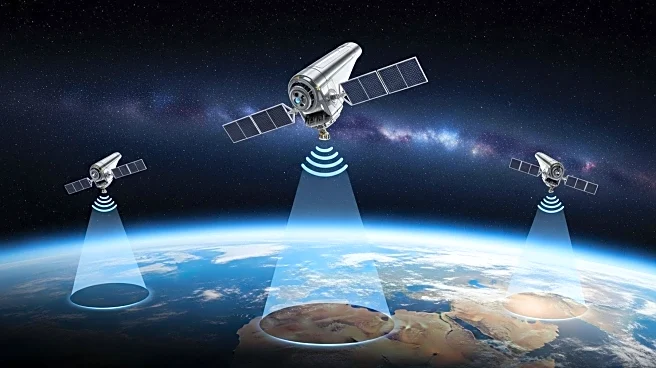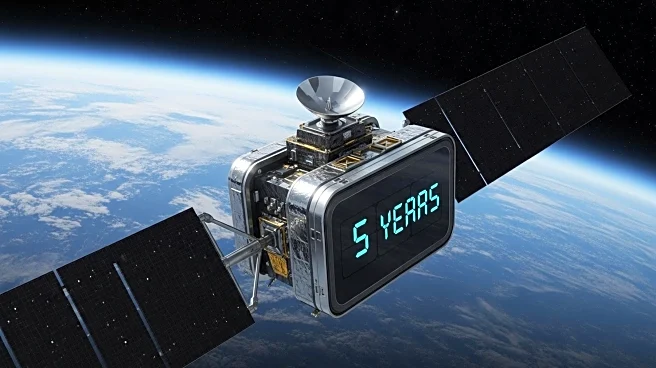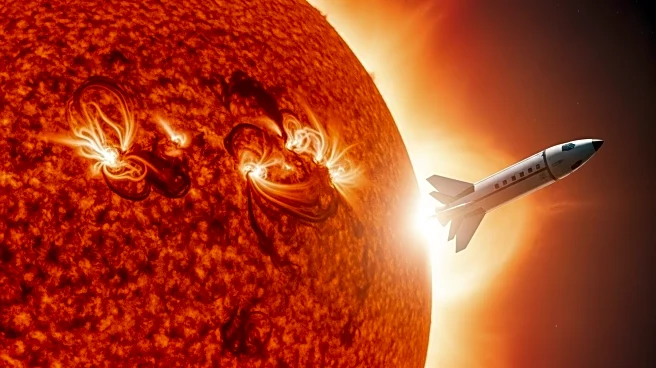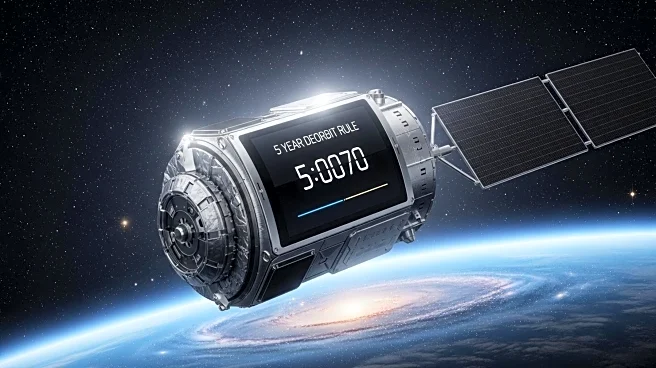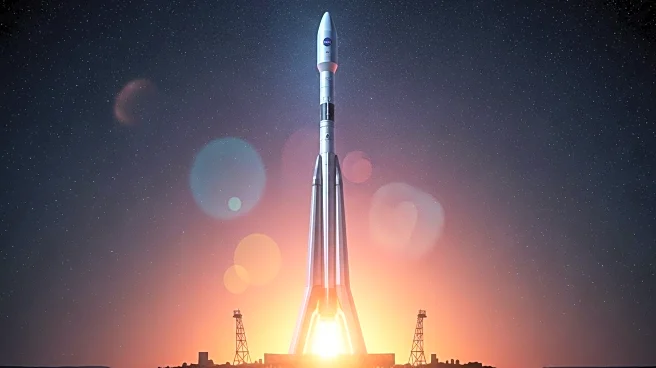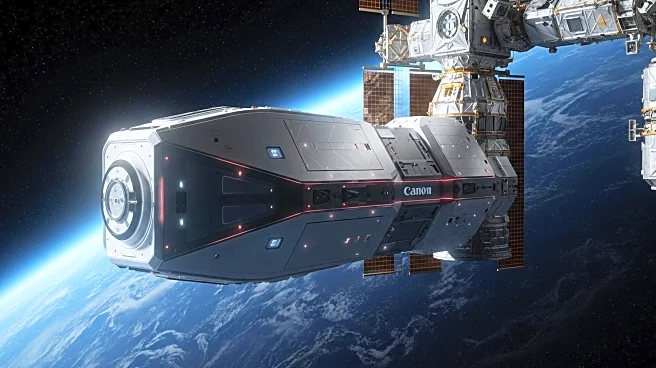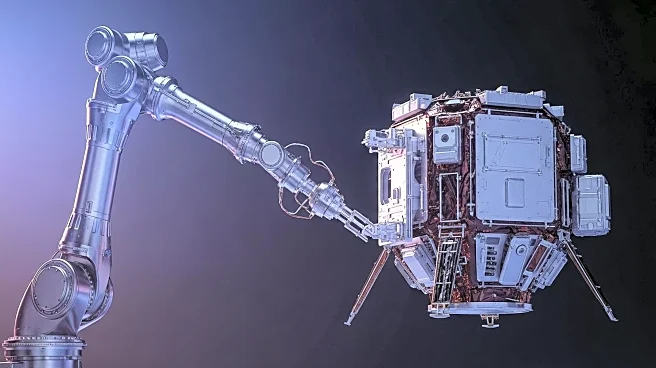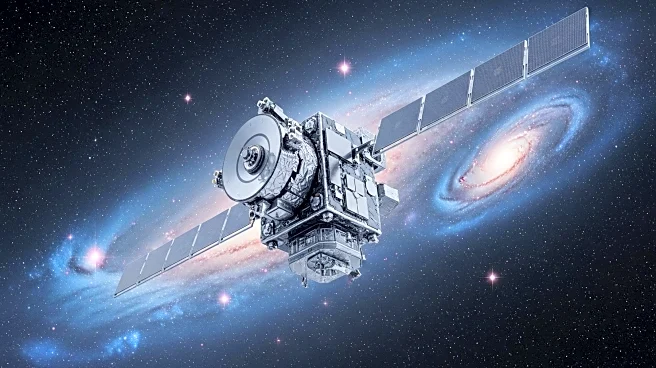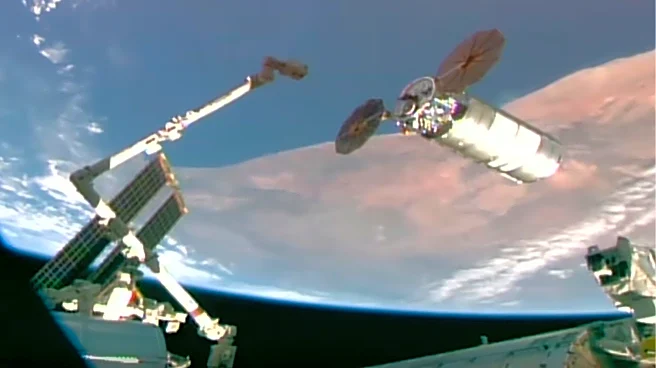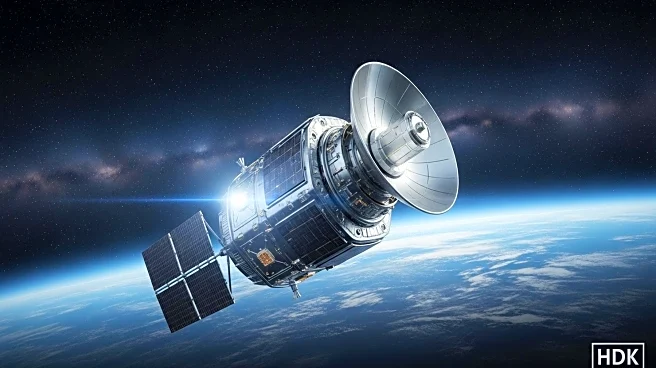What is the story about?
What's Happening?
SpaceX successfully launched 28 Starlink satellites from Cape Canaveral Space Force Station in Florida on September 18, 2025. The Falcon 9 rocket, which carried the payload to low-Earth orbit, marked its 11th mission and achieved another successful reuse and recovery. This launch increased SpaceX's Starlink constellation to nearly 8,400 active satellites, the largest network of spacecraft ever assembled. Starlink provides broadband internet coverage worldwide, especially to remote areas, and has enabled over 5 million users in 125 countries to connect to high-speed internet.
Why It's Important?
The rapid deployment of Starlink satellites is bridging the digital divide in rural and underserved regions by providing high-speed internet access. This development is significant for industries, emergency services, and military operations that require reliable connectivity in remote areas. The low-orbit design of Starlink satellites reduces latency, enhancing internet performance compared to traditional satellites. Competitors like Amazon's Project Kuiper and OneWeb are also entering the satellite internet market, indicating a growing demand for global connectivity solutions.
What's Next?
SpaceX plans to continue its aggressive launch schedule, with Falcon 9 rockets lifting off approximately every two days. The company aims to expand the Starlink constellation further, potentially reaching tens of thousands of satellites. This expansion will enhance global internet coverage and support SpaceX's ambitious projects, including the Starship rocket. Meanwhile, competitors are ramping up their satellite deployments, which could lead to increased competition and innovation in the satellite internet industry.
Beyond the Headlines
The growing number of Starlink satellites raises concerns among astronomers and space safety experts about potential interference with telescope observations and increased risk of satellite collisions. SpaceX is working to mitigate these issues by experimenting with darker coatings and sunshades on its satellites. Additionally, the environmental impact of satellite reentries is being studied, as they could release aluminum oxide in the upper atmosphere, potentially affecting climate and ozone.
AI Generated Content
Do you find this article useful?


